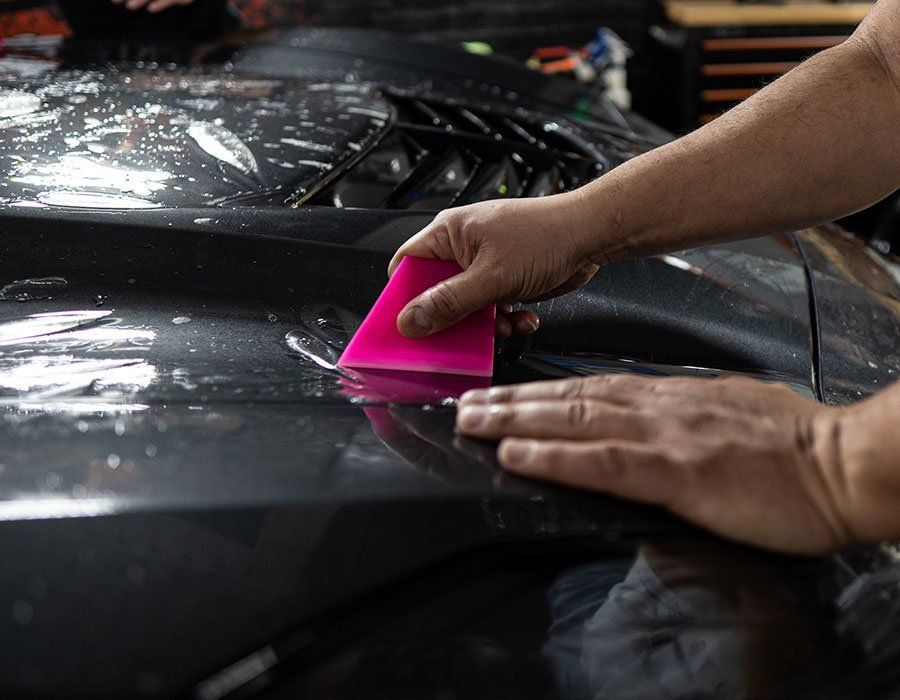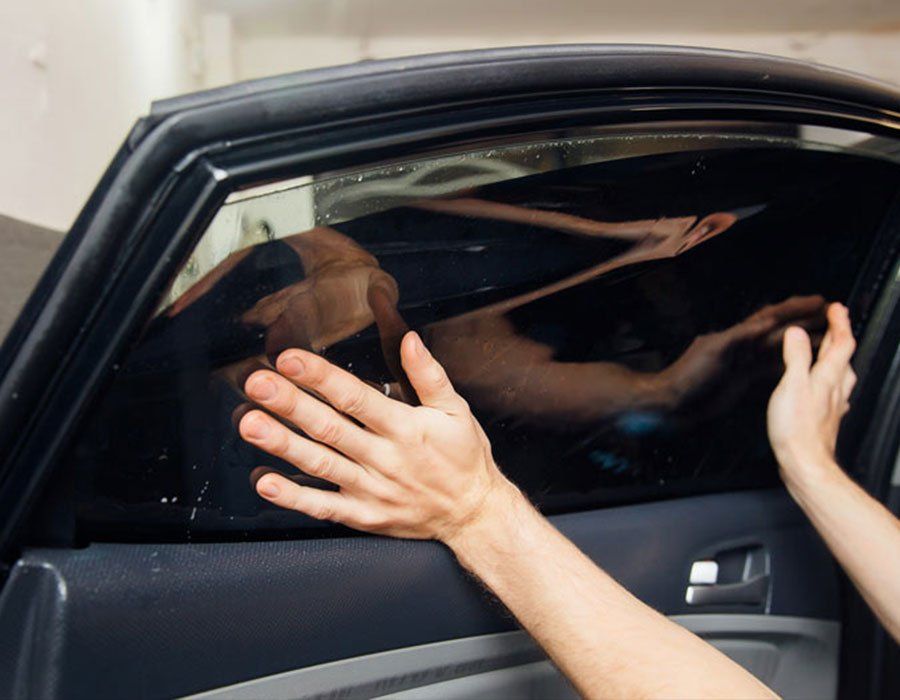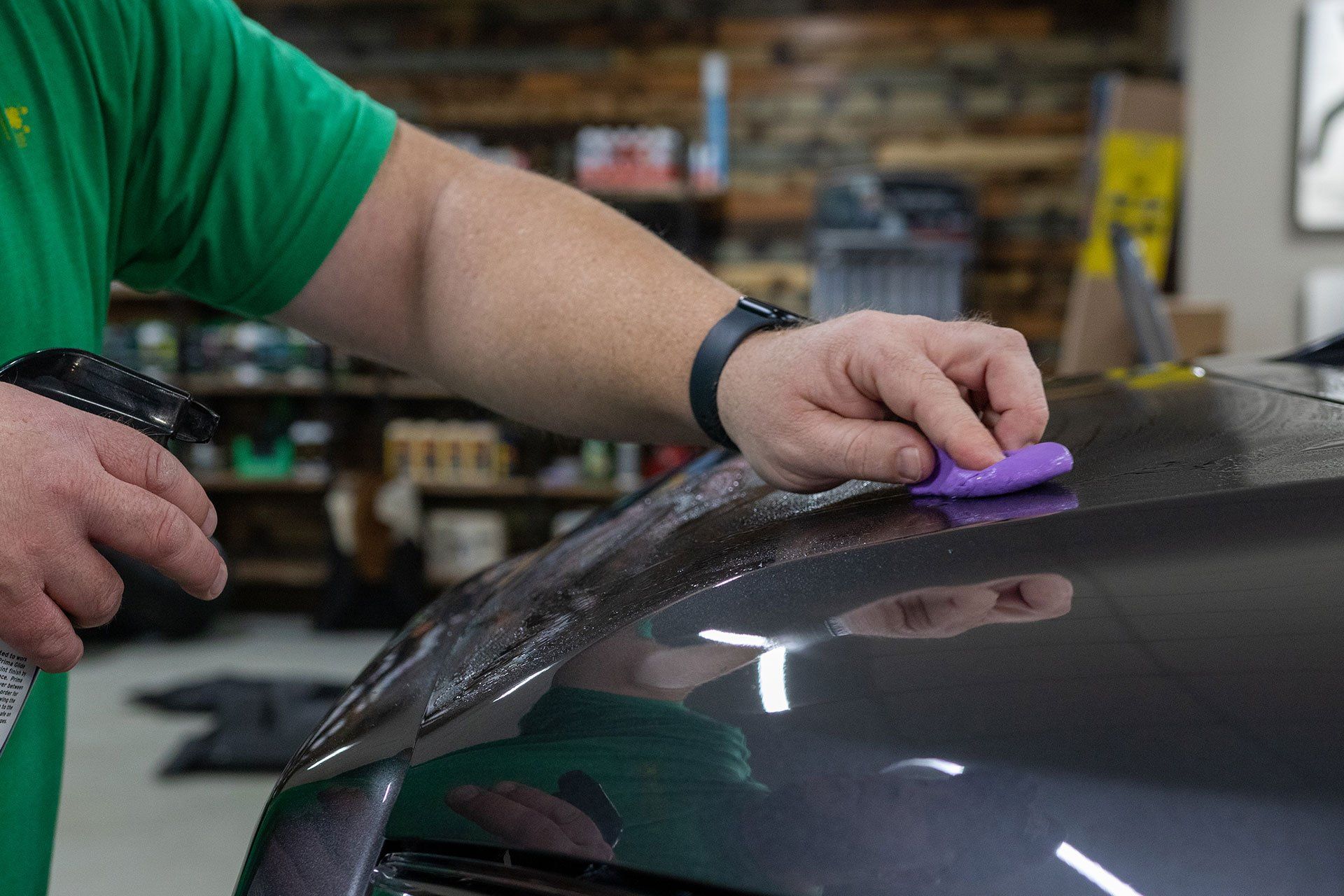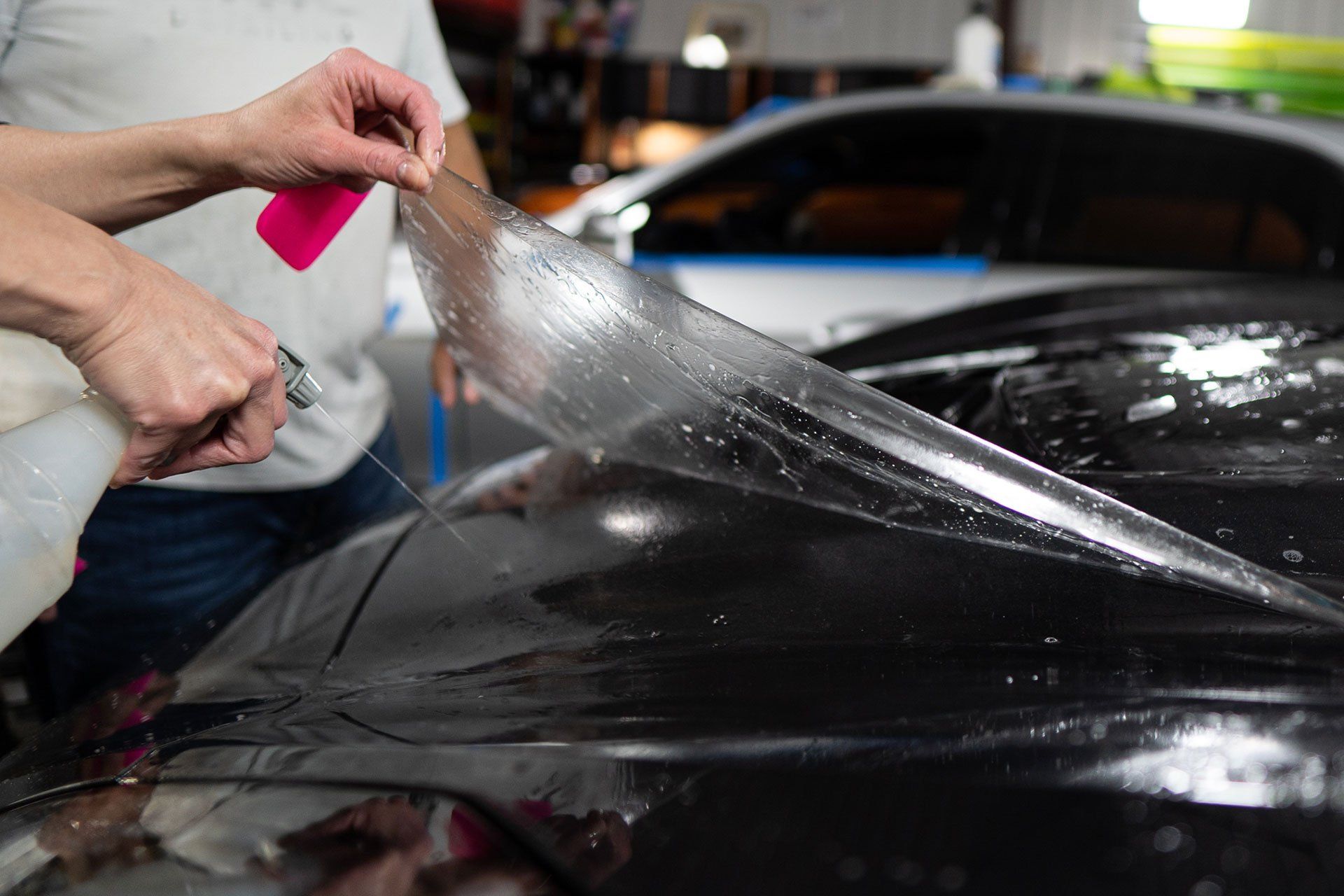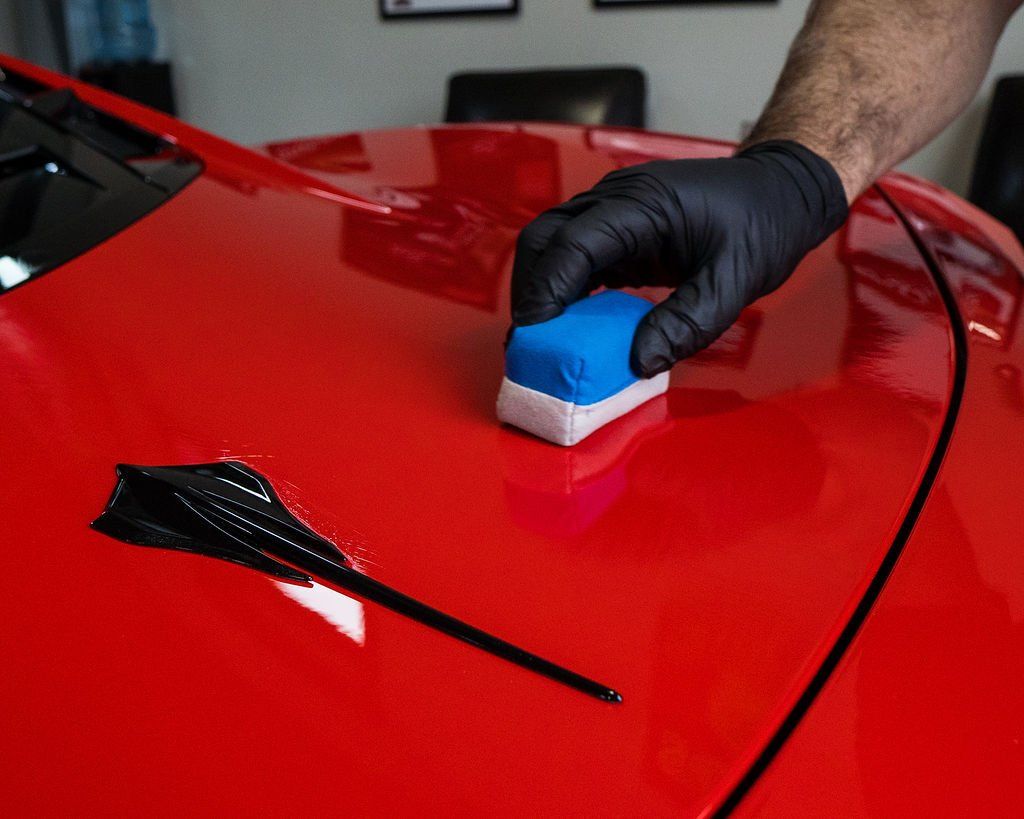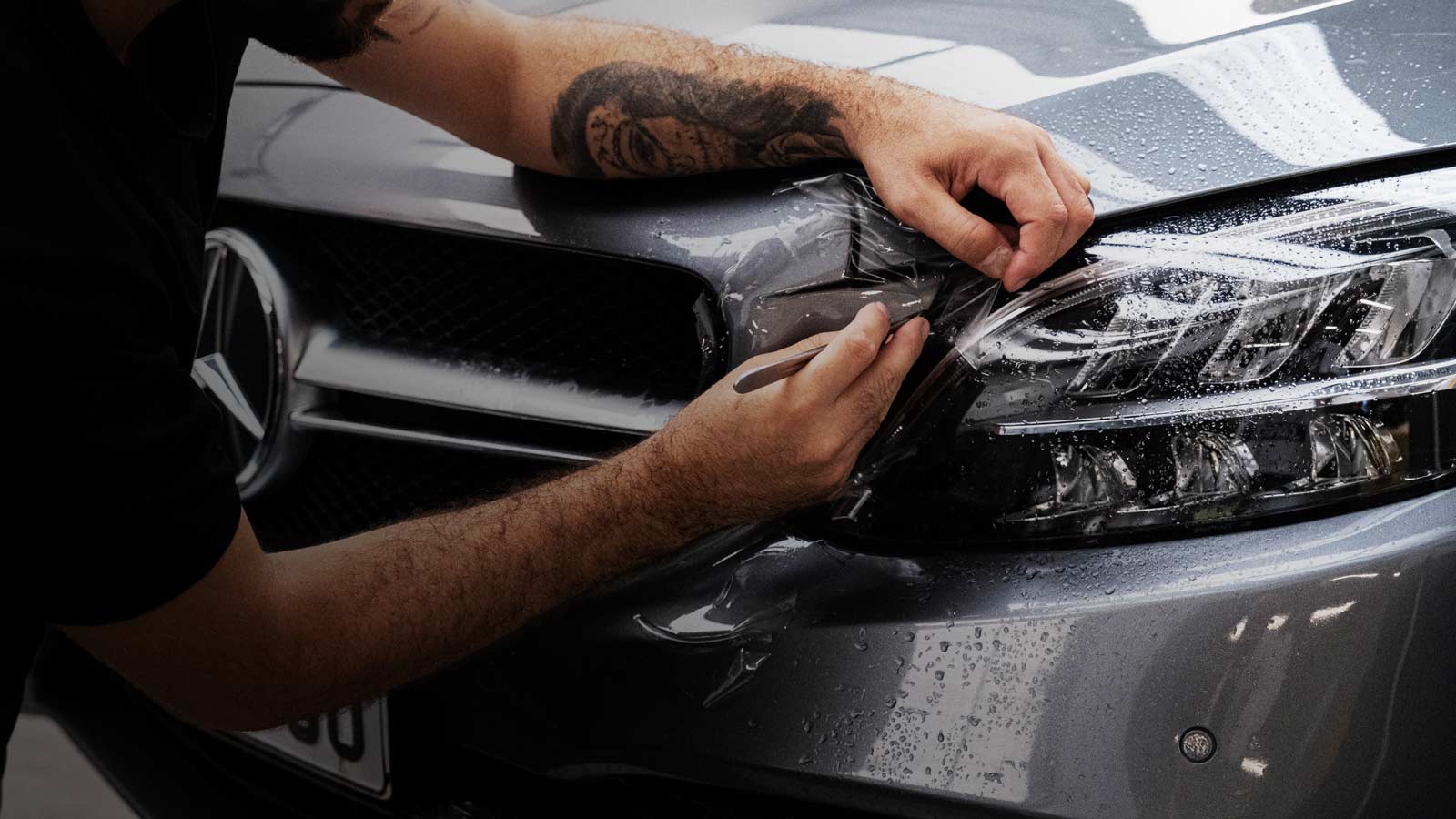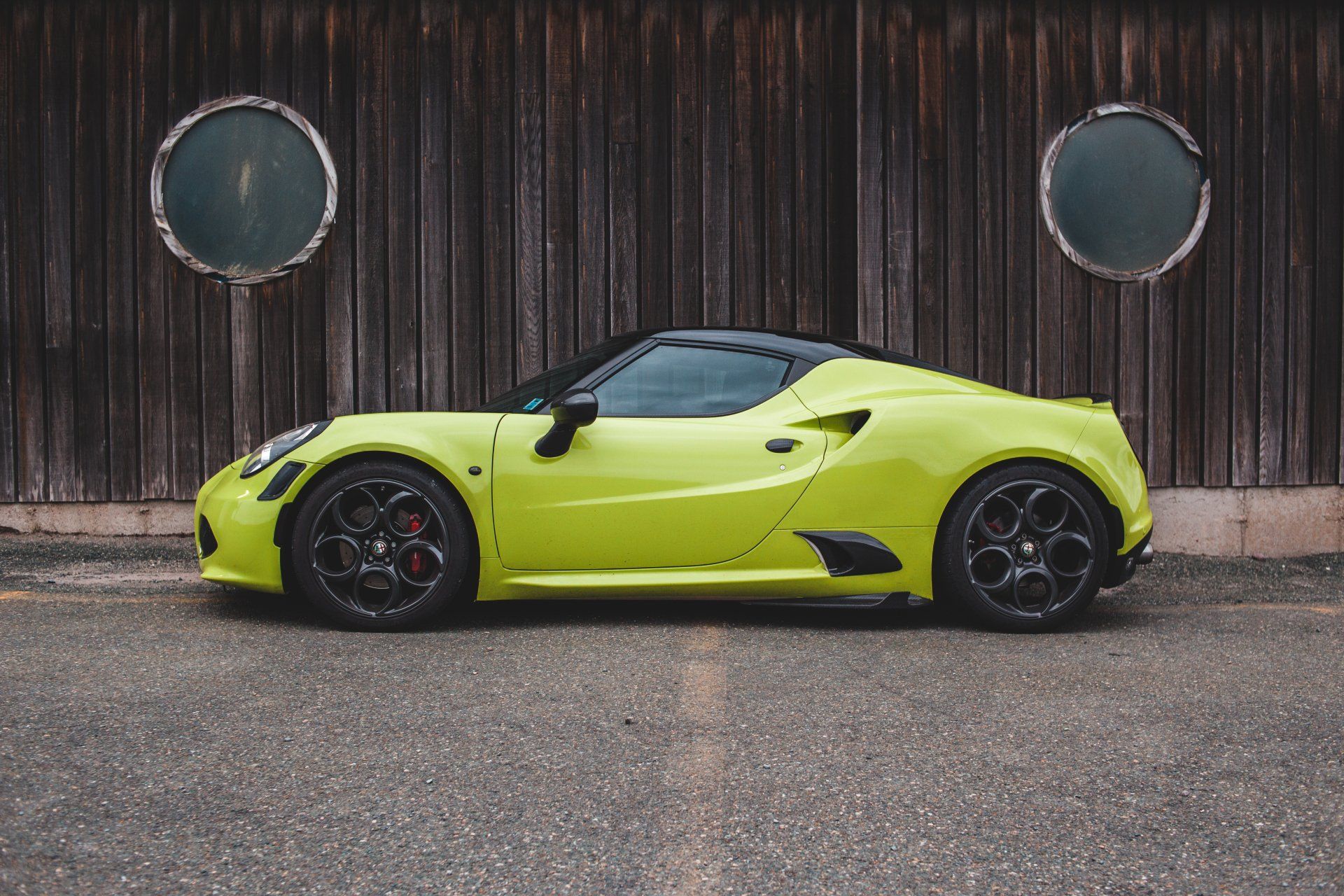Auto Film Guys Blog
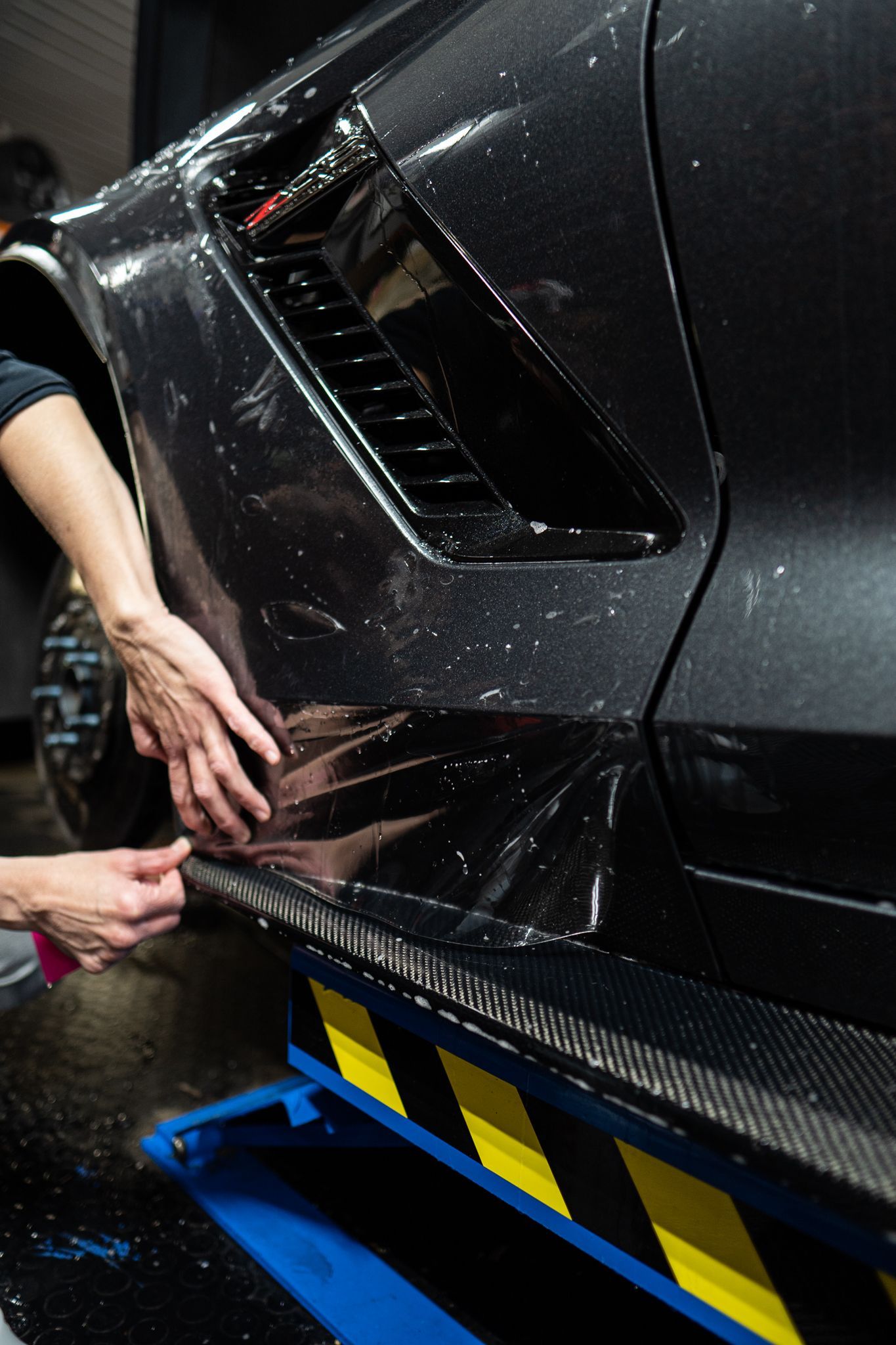
Yes, paint protection film (PPF) shields are indeed a car's armor against environmental damage. Acting like an invisible barrier, they are specifically designed to fend off harmful elements like road debris, bug acids, bird droppings, and the sun's harsh rays. Surprisingly, these protective films also come with a distinct quality of self-healing, automatically fixing minor scratches and blemishes. So it’s not just about shielding your vehicle; it’s about maintaining that brand-new sparkle even after years on the road. Now let’s delve into understanding the function of PPF even better. Paint Protection Film (PPF) shields your car from environmental contaminants by providing a physical barrier that prevents road debris, bug splatters, minor abrasions, and other pollutants from directly impacting the paint surface. Additionally, PPF offers UV and chemical resistance, protecting your vehicle's exterior from harm from environmental factors. Understanding the Function of PPF Paint Protection Film (PPF) is like a superhero cape for your car. It's made from thermoplastic urethane and is clear, so it won't change the color of your car. Instead, it shields your paint from the road's harsh environment. Imagine your car as a brave knight standing guard against all kinds of enemies: chips thrown up by other cars' tires, bugs kamikaze-diving onto your hood, and the harmful rays of the sun beating down. PPF acts as armor, protecting your noble steed from these foes. A Closer Look at PPF's Function So, how does this modern marvel actually work? Let's break it down: Physical protection: It shields your car's exterior from stone chips, abrasions, and scratches caused by road debris. Think of it as a shield that takes a hit instead of your precious paint. Chemical protection: Not all enemies are visible to the eye. Insect acids, bird droppings, and harsh chemicals can wreak havoc on your car's paint. PPF forms an invisible barrier against these chemical assailants. UV protection: Just like sunscreen protects our skin, PPF shields your car from the damaging effects of UV rays, preventing discoloration and fading over time. If you've ever seen a car with a worn-out and faded paint job, chances are it didn't have the protection of PPF. For longevity in your vehicle's appearance, maintaining its value, and keeping it protected from the elements, a layer of PPF is highly recommended. It's clear that the function of PPF goes beyond just shielding your car's paint; it provides comprehensive protection against a variety of environmental contaminants and physical damage. Whether you're driving in city traffic or cruising down open country roads, PPF keeps your car looking pristine. PPF Protection against Specific Environmental Contaminants Road Debris: One of the most common threats to your car's paint job comes in the form of stone chips, scratches, and other damage caused by debris kicked up from the road while driving. PPF acts as a barrier against these potential paint-damaging offenders, preserving the pristine appearance of your vehicle. Imagine driving down a gravel-strewn road or behind a large truck on the highway. The tiny pebbles and debris that hit your car's front end at high speeds can cause significant damage if left unprotected. PPF acts as an invisible shield, absorbing the impact from these projectiles and preventing them from leaving their mark on your car's exterior. Bug Splatters: As you cruise down the road, insect remains and acids are bound to find their way onto your vehicle's surface. These seemingly harmless residues can actually eat into the paint, causing permanent damage over time. PPF offers a protective barrier against bug splatters, preserving the integrity of your car's paintwork. When traveling during warm months or in areas with heavy insect populations, bug splatters become more than just an eyesore—they can lead to costly paint repairs if not addressed promptly. PPF shields the paint from these acidic residues, ensuring that your car maintains its glossy finish despite encounters with unwelcome insects. Bird Droppings: Not only are bird droppings an unsightly nuisance, but they also pose a threat to your car's paint due to their corrosive nature. If not cleaned promptly, bird droppings can cause etching and discoloration on the surface of your vehicle. PPF acts as a safeguard against this corrosive effect, protecting the paint from lasting damage. Whether parked under a tree or simply out in the open, cars are often vulnerable to avian "bombs." PPF offers peace of mind by creating a barrier between the acidic constituents of bird droppings and your car's finish, providing time for proper cleanup without risking irreversible damage to the paint. UV Exposure: The sun's ultraviolet (UV) radiation can be harsh on a vehicle's paint, leading to fading and discoloration over time. PPF serves as a shield against these harmful effects, helping to maintain the color and shine of your car despite prolonged exposure to UV rays. Constant exposure to sunlight can gradually dull and fade your car's paint job, diminishing its visual appeal and overall value. By applying PPF, you're essentially outfitting your vehicle with an extra layer of defense against UV radiation, ensuring that it retains its luster even after enduring extended periods under the sun. With these specific environmental contaminants in mind, it's evident that PPF provides comprehensive protection for your car's paintwork, safeguarding it from a wide array of potential hazards encountered during everyday use.
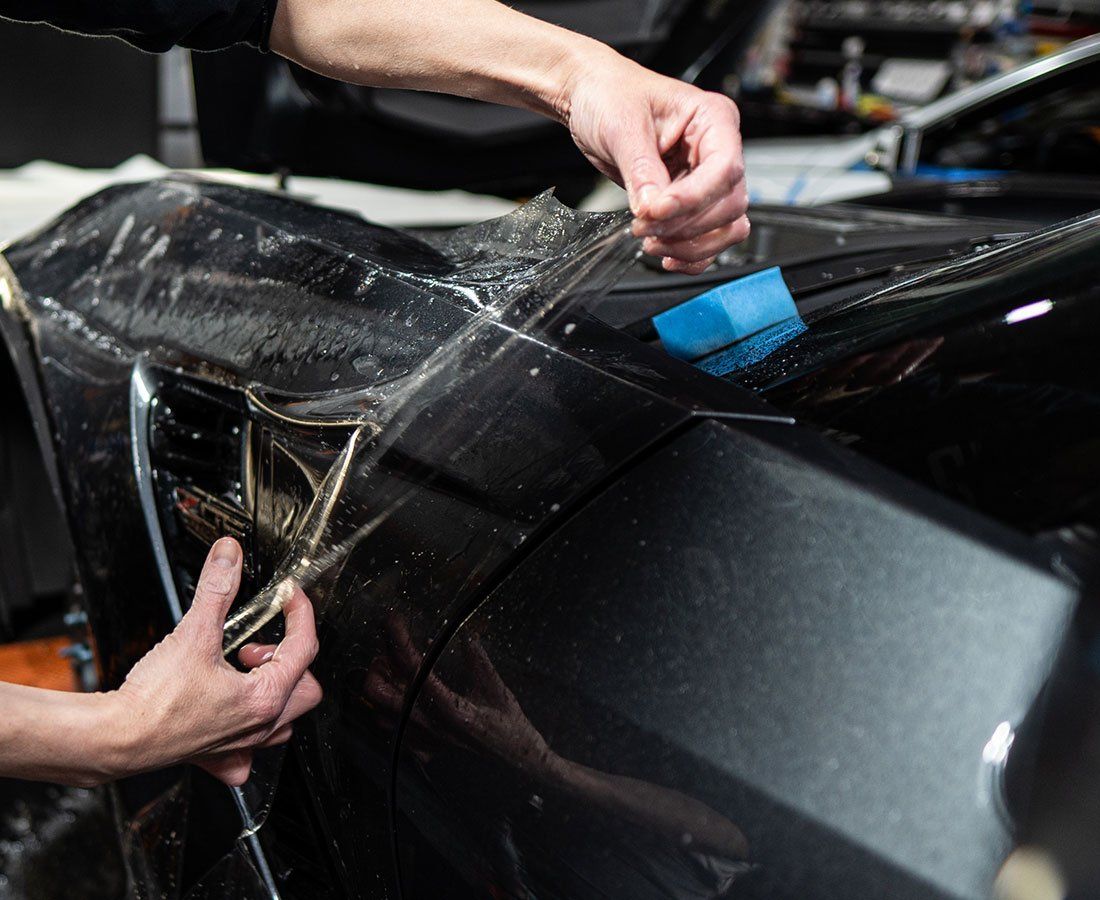
PPF, short for Paint Protection Film, works as an effective guard for your vehicle's bodywork against bird droppings. Acting as an absorbent barrier, it stops these droppings, particularly acidic in nature, from coming into direct contact with your car's paint, thereby preventing potential damage. But PPF doesn't just limit itself to battling bird droppings. It also protects your car from common harm like scratches, scuffs and stone chips, offering broader protection than one may initially realize. Let's delve deeper into this protective film. Paint Protection Film (PPF) acts as a robust barrier, shielding your vehicle's paint from corrosive substances like bird droppings and preventing etching and damage. By investing in PPF, car owners can effectively guard against the harmful effects of bird droppings on their vehicle's paint, thus preserving its pristine condition for longer durations. What is PPF and How Does It Protect Your Vehicle? Paint Protection Film, or PPF for short, acts like a suit of armor for your car—`a nearly invisible layer that shields the paint from all kinds of harm. It's akin to the force field in those sci-fi movies—except it's real! This transparent film is carefully applied to the exterior of your vehicle to act as a protective barrier against a wide range of potential damage, including those pesky bird droppings. Here's where things get really cool: when bird droppings land on a car with PPF, the film absorbs the impact, stopping it from reaching your precious paint. You can think of it as a superhero swooping in at the last second to take the hit instead of your paint. By absorbing the impact, PPF prevents bird droppings from directly etching into the car's paint, safeguarding your vehicle’s appearance and value. Imagine you're eating at a restaurant and someone spills a drink. Instead of it seeping onto your clothes, you’re wearing an invisible shield that takes the stain away instead. That’s what PPF does for your car! But it’s not just about protection from bird droppings; PPF guards against an array of threats such as stone chips, scratches, and environmental damage too. It’s like giving your car its own superpower. If you care about keeping your car looking pristine and new, understanding how PPF protects your vehicle is crucial. Visit our website for detailed guides on the application and benefits of PPF so that you can make an informed decision regarding the protection of your beloved vehicle. Advantages of PPF Against Bird Droppings Bird droppings are not only unsightly but also damaging to your vehicle's paint. They contain acidic substances that can eat away at the paint and clear coat if left untreated, leading to a condition known as "paint etching." However, this is where PPF steps in as a protective barrier against such corrosive elements. When bird droppings land on your vehicle, it's like a small acid attack on the paint. If not promptly cleaned off, the acidic nature of the droppings can react with the clear coat and paint layers, leading to unwanted damage. This is where PPF shines; it acts as a sacrificial layer that takes the hit instead of your pristine paint job. By preventing direct contact between the corrosive substances and the actual painted surface, PPF significantly reduces the risk of paint etching. The effectiveness of PPF lies in its durable and resilient nature, offering a shield that can withstand the corrosive impact of bird droppings. It adds an extra layer of protection that helps to maintain the glossy finish of your vehicle without compromising on its visual appeal. Think of it as a superhero cape for your car that will swoop in to prevent potential damage from bird droppings. The sacrificial nature of PPF ensures that any acidic substances are intercepted before they can wreak havoc on your vehicle's beautiful exterior. Furthermore, the preventative nature of PPF extends beyond just protecting against immediate harm. It also safeguards your investment in the long run by preserving the integrity and value of your vehicle. PPF doesn't just protect—it preserves . Consider it an insurance policy for your car's paint job. Even though you might not frequently come into contact with bird droppings, having PPF protection gives you peace of mind and ultimately improves your driving experience. In essence, understanding the advantage of PPF against bird droppings underscores its role as a reliable safeguard for maintaining your vehicle's impeccable appearance and protecting it from potential damage. Additional Benefits of PPF In addition to shielding your vehicle's paint from the acidic perils of bird droppings, PPF serves as a robust defense system against various hazards encountered on the road. Stone chips , a common concern, can occur when debris or gravel kicked up by vehicles ahead makes contact with the front of your car, resulting in unsightly marks and chipped paint if left unprotected. Moreover, bug splatter may not seem alarming at first, but these seemingly harmless splats can become increasingly stubborn to remove over time. Their acidic composition can accelerate paint etching similarly to bird droppings if left unattended. By applying PPF, you create a barrier that mitigates this issue and makes cleaning off bug remnants a breeze, saving time and preserving your vehicle's pristine finish. Minor abrasions are another regular occurrence for vehicles that can be easily prevented with PPF. These minor bumps and scrapes can add up over time, leaving behind surface imperfections that detract from the visual appeal of your vehicle. PPF acts as a shield, absorbing the impact from such incidents and safeguarding your car's exterior. To put this into perspective, think of PPF as the ultimate bodyguard for your vehicle's pristine appearance. Just like a bodyguard shields their charge from potential harm, PPF provides an invisible yet impenetrable layer that thwarts threats before they even reach your car's surface. In essence, while protecting against bird droppings is important, PPF offers a complete shield against an array of potential harms. From airborne debris to pesky insects and accidental scratches, PPF provides an all-encompassing defense to uphold the immaculate appearance of your vehicle.
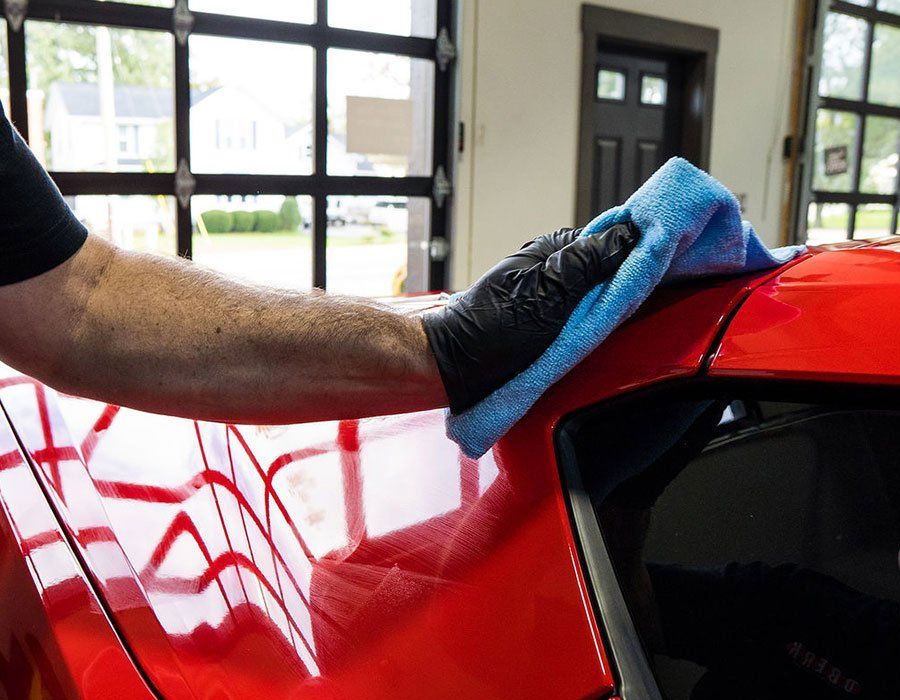
Ceramic coatings serve as a shield, protecting surfaces from harmful ultra-violet rays. These coatings are made of tiny ceramic particles mixed with Ceramic coatings outperform conventional coatings by offering about 95% UV blockage, as opposed to the 70% blockage that conventional alternatives provide. resin, forming a clear but tough barrier. It’s like a barrier that catches and scatters the potent ultraviolet light, stopping it from reaching and damaging what's beneath. So, it’s not just a case of fading colors or surfaces getting rough; it goes beyond that, guarding the actual structure of the material underneath. This layer, simple yet powerful, ensures an effective guard against sun-induced wear and tear. And so begins our understanding of ceramic coatings and their safeguarding role against UV damage. Ceramic coatings create a thin, transparent layer that acts as a barrier between the surface and UV rays, preventing damage such as fading, discoloration, and structural damage. The ceramic particles in the coating serve as a protective shield, enhancing the longevity of the surface's appearance. Ceramic Coatings Basics and UV Protection Ceramic coatings are like a shield for your car or building. They are made up of tiny ceramic particles mixed into a clear, strong resin. When this mixture is applied to a surface, it creates a transparent protective layer that keeps harmful elements at bay. This thin layer acts as a barrier between the painted surface and environmental factors, providing an extra level of defense. The very composition of ceramic coatings allows them to excel in UV protection. Ultraviolet radiation from the sun can be quite damaging to surfaces, causing colors to fade, materials to discolor, and structural integrity to degrade over time. This is where the magic of ceramic coatings comes into play. With their ability to block UV rays, these coatings effectively prevent such damage from occurring. Fun Fact: Just like how sunscreen protects your skin from UV rays, ceramic coatings safeguard your vehicle's paint and other surfaces from UV radiation. Imagine your car parked under the sun for hours on end—the UV rays are relentless in their assault on its exterior. However, with a ceramic coating in place, the harmful effects of UV rays are significantly reduced. It's important to note that not all coatings offer the same level of UV protection. Ceramic coatings outperform conventional coatings by offering about 95% UV blockage, as opposed to the 70% blockage that conventional alternatives provide. Moreover, the impact of UV exposure on material degradation is notably lower with ceramic coatings than with traditional ones. Consider this: When your car is treated with a ceramic coating, you’re increasing its resistance to material degradation by up to 10%, compared to a traditional coating, which only decreases material degradation by up to 30%. These statistics speak volumes about the efficacy of ceramic coatings in mitigating the effects of UV radiation. Additionally, ceramic coatings' impressive UV protection longevity—up to 5 years—outshines that of conventional coatings, which only provide protection for up to 2 years. In essence, the combination of their durable composition and remarkable UV protection capability makes ceramic coatings an invaluable asset in preserving and prolonging the life of surfaces. Mechanisms of UV Protection in Ceramic Coatings Imagine your car's paint as a medieval castle and UV radiation as attacking hordes. Ceramic coatings act like a mighty shield, protecting the castle from harm. The key to this defense lies in the composition of ceramic particles and how they interact with UV light. Ceramic coatings are crafted with minute ceramic particles suspended within a clear, durable resin. These particles form a barricade against UV rays, absorbing and dispersing the harmful radiation before it can reach the surface beneath. Much like an expert archer picking off assailants from a distance, the ceramic particles neutralize the UV light, preventing it from penetrating the surface and causing damage. This protective characteristic is akin to having soldiers stationed at different points along the castle walls, intercepting enemy arrows before they breach the outer defenses. By intercepting UV rays, ceramic coatings ensure that damaging effects such as fading, discoloration, and structural damage are kept at bay. This means that your vehicle retains its glossy finish and structural integrity for an extended period, standing strong against the relentless assault of UV radiation. So, just as a well-crafted shield protects a soldier from harm on the battlefield, ceramic coatings fortify your vehicle against the onslaught of UV rays, ensuring it remains unscathed by their damaging effects over time.

